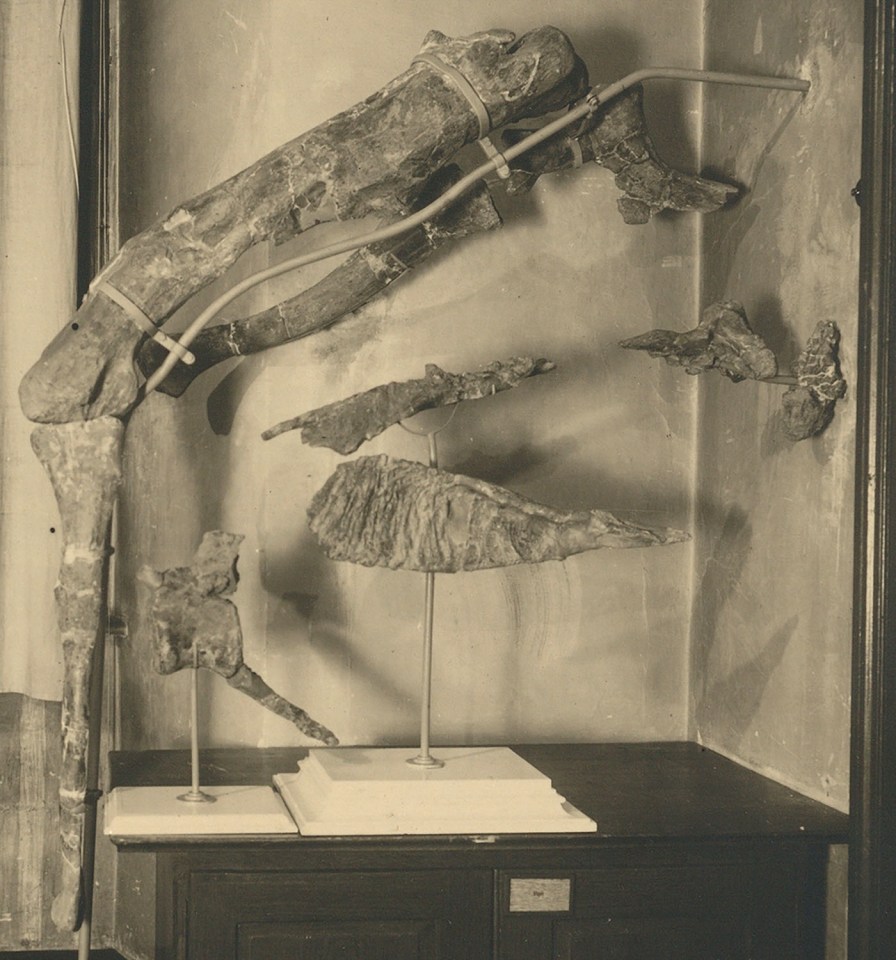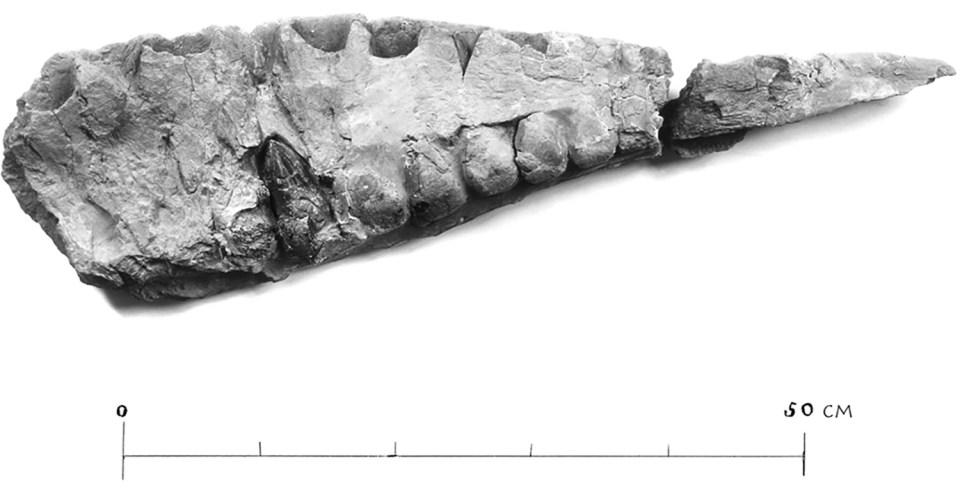A GIANT horned dinosaur species has been unearthed – despite the bones’ destruction in World War Two.
The groundbreaking discovery of the 10-metre-long skeleton was made after paleontologists dug through photographic archives.
The predatory dinosaur species, named Tameryraptor markgrafi, was originally discovered in 1914 by Ernst Stromer von Reichenbach who died in 1952.
The 95million-year-old skeleton was excavated in the Bahariya Oasis in Egypt before it was stored in the Bavarian State Collection for Paleontology and Geology in Munich, Germany.
The findings suggest there were more species of dinosaurs in North Africa than historians previously thought.
The remains were destroyed along with other Egyptian discoveries when Munich was bombed in World War Two.
Tragically the only remnants of the dinosaur discovery were Dr Stromer’s notes, illustrations of the bones and black and white photographs of the skeletons.
The photos show parts of the dinosaur’s skull, spine and legs.
Maximilian Kellermann, the study’s first author said: “What we saw in the historical images surprised us all.
“The Egyptian dinosaur fossil depicted there differs significantly from more recent Carcharodontosaurus found in Morocco.”
“Stromer’s original classification was thus incorrect. We identified a completely different, previously unknown predatory dinosaur species here and named it Tameryraptor markgrafi,” he added.
The word “Tamery” is the ancient name for Egypt and the species name “markgrafi” is a nod to Dr Stromer’s fossil collector Richard Markgraf who performed the excavation.
The dinosaur had symmetrical teeth, tiny eyes and a little rounded horn on the bridge of its nose.
“This work shows that it can be worthwhile for paleontologists to dig not only in the ground, but also in old archives,” said Oliver Rauhut, another author of the study.
This comes after experts uncovered the UK’s biggest dinosaur highway in Oxfordshire.
Around 200 different prehistoric footprints dating back 166million years were found in the quarry.
The extraordinary site was unearthed after a quarry worker felt “unusual bumps” as he was stripping the clay back with his vehicle.
Scientists were called in to investigate and discovered five extensive trackways – and there’s evidence of more in the surrounding area.
The longest is 150 metres but they could go on much further.
“These footprints offer an extraordinary window into the lives of dinosaurs, revealing details about their movements, interactions, and the tropical environment they inhabited,” said Professor Kirsty Edgar, from the University of Birmingham.
Dr Duncan Murdock, Earth Scientist from the Oxford University Museum of Natural History, added: “The preservation is so detailed that we can see how the mud was deformed as the dinosaur’s feet squelched in and out.
“Along with other fossils like burrows, shells and plants we can bring to life the muddy lagoon environment the dinosaurs walked through.”
Among the site are footprints belonging to the nine metre-long ferocious predator Megalosaurus, which had huge distinctive, three-toed feet with claws.
The Megalosaurus was the first dinosaur to ever be named back in 1824.


